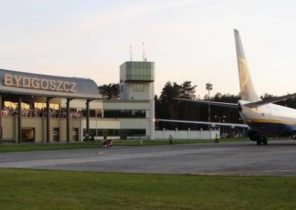
Vice-Admiral Thomas Moore (Thomas Moore), head of NAVSEA (Control of weapons and shipbuilding, U.S. Navy), said this week of the newest us aircraft carrier “Gerald Ford” (Gerald R. Ford) will be released, finally, into the open sea and start to pass the first real sea trials. Weather prevented the aircraft carrier to put to sea earlier in the beginning of April, as originally planned. During trials the aircraft carrier will not work with carrier-based aircraft — is to be done later. Meantime, will check the basic functionality.
Officially in operation “Gerald Ford” should stand in the course of this year, most likely in the summer, and until after the test this week it will be another test this time with the Commission of the fleet, which, if all goes well, make the aircraft carrier in April-may. Originally in the Navy he was supposed to be delivered in September 2015. The carrier in the end on paper it costs US $ 12.9 billion dollars and became the first new project of the US aircraft carriers in 40 years. It is expected that the “Gerald Ford” will remain in service until 2070.
Today representatives of the US Navy are pleased with the progress of construction of two aircraft carriers in this series. The aircraft carrier “John F. Kennedy” (John F. Kennedy) is ready by 27%, and in June is expected to perform 50% of the work. It will cost 11.4 billion dollars and its construction will be spent 18% less working hours than the “Gerald Ford”. In 2025, “John F. Kennedy” should in theory replace the USS “Nimitz” (Nimitz). As for the aircraft carrier “enterprise” (Enterprise), the “preliminary work began” and the contract for construction should be concluded in 2018.
Inspired by the progress aircraft carriers and plans trump for the development of the Navy, naval leadership of the United States again turned to the program to create a family of surface ships of new generation Future Surface Combatant. By 2020 it is expected to generate a request for a project proposal, “evaluation of alternatives” will begin this summer. It is likely, according to the same Vice-Admiral Thomas Moore, will focus on how to create the vehicle of the future “from scratch” and not upgrade further destroyers DDG-51 Arleigh Burke.
Ship of the new generation Future Surface Combatant should, in theory, be ready for (radio)electronic war, to be armed with military lasers and railguns, have an open architecture on the basis of which you can change or build on different technological innovations (weapons, sensors, communications, etc.) plug-and-play.
Ships of the future are seen as standard and affordable platform that is not tied rigidly to its load, which can be quickly installed and expensive modules. In fact the challenge is to create a new surface cheap platform which can be developed and used for decades in the foreseeable future (in the next 40-60 years), depending on the market conditions of military threats and challenges.
Thomas Moore specifically stressed that this time, as it did not want to accelerate work on the creation of Future Surface Combatant, will take into account all the lessons and difficulties with current projects (the aircraft carrier “Gerald Ford”, the destroyer “Elmo zumwalt” (Zumwalt), and warships of the coastal zone (Littoral Combat Ships)), especially with regard to their prices.
By the way, became famous and readiness of two more destroyers of the DDG 1000 series. “Michael Moncur” (Michael Monsoor, DDG 1001) was prepared in 92% and “LBJ” (Lyndon B. Johnson DDG 1002) was prepared in 59% on the 10th of March this year. As representatives of the U.S. Navy in 2019, the destroyer “Elmo zumwalt” (DDG 1000) will produce the first training-combat shooting.
Recall that on 15 October 2016 finally officially rose to the ranks of the U.S. Navy ship “Elmo zumwalt” (DDG 1000). The commander of the Pacific armed forces of the USA Admiral Harry Harris then said during the celebrations, what if Batman had a ship, it would be “Elmo zumwalt”. This phrase in the U.S. Navy and today I reiterate at every opportunity. The construction of destroyers cost at least $ 4.4 billion, and the program of development and creation of three ships (initially, the Navy wanted as many as 32 destroyers of that class) is estimated at 22.5 billion dollars.
The problem with destroyer is not the end. Shortly before the commissioning was discovered the problem: lubrication system of one of the propeller shafts got sea water, and in November broke down and main propulsion of the ship during the passage through the Panama canal, so that the “Elmo zumwalt” was towed to the former naval base of the United States.
2 APR its first sea trials successfully completed the nuclear submarine SSN-787 “Washington” class “Virginia”. The boat made a dive, tested move at high speeds underwater and on the surface.
In August-September of this year the U.S. Navy will receive its first aerial drones MQ-4C Triton and begin operational testing. First preliminary tests have already taken place in March of this year. In 2018, two cars will be put on duty at the U.S. base on the island of GUAM in the Pacific ocean. By 2021, the drones should replace the remaining building electronic intelligence aircraft EP-3E. Can MQ-4C Triton to take over and some of the features of more modern anti-submarine aircraft P-8A Poseidon, the US Navy declined to comment.
And on April 3 it became known that the surface drones Wave Glider from Liquid Robotics company, which last year bought Boeing, stood in line in the U.S. Navy and perform tasks on submarine detection. Efficiency of application for this kind of activity these drones proved during the exercise the Royal Navy off the coast of Scotland in 2016, the same year.
Wave gliders are now able to cross the Pacific ocean and to be in Maritime patrols over four months. For the detection of submarines, they can use your hydrocone and to read and transmit information with a previously installed underwater sonar. In the base drone costs 300 thousand dollars. In total the company sold more than 400 drone to its clients in both civil and military purposes. How many anti-drone was acquired by the U.S. Navy and where they are used is not disclosed.







